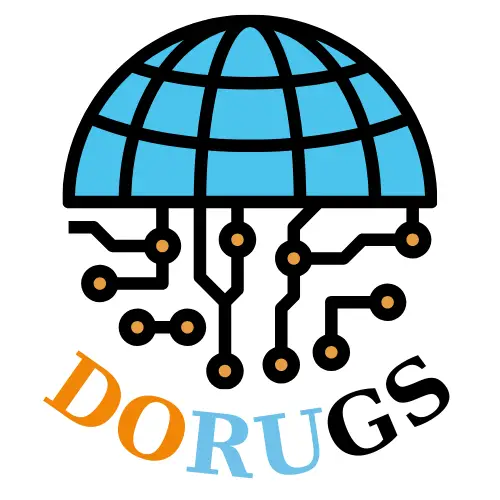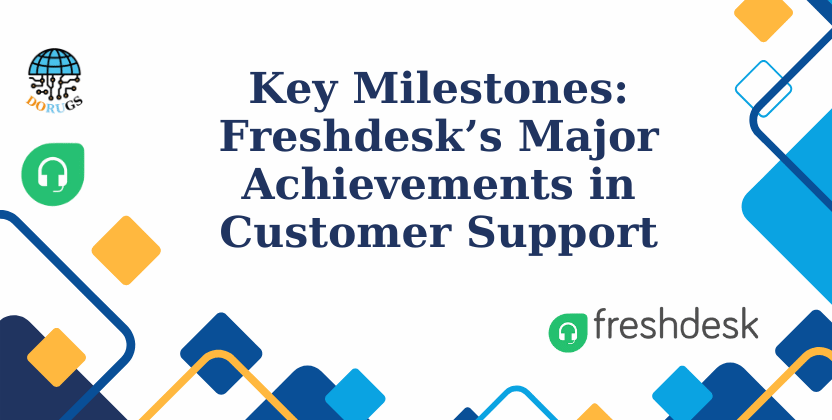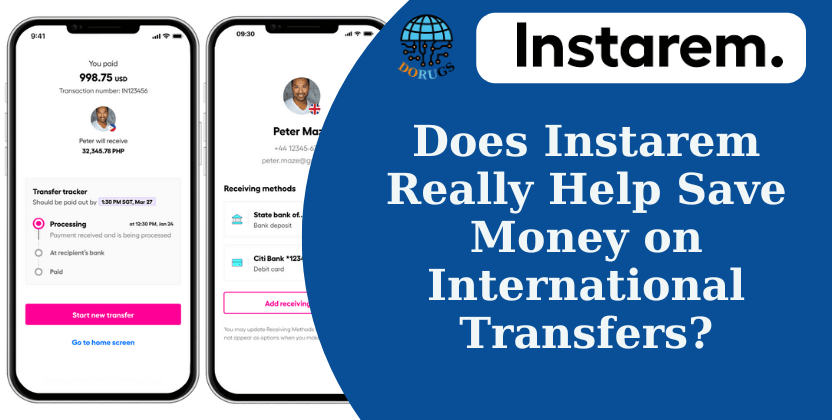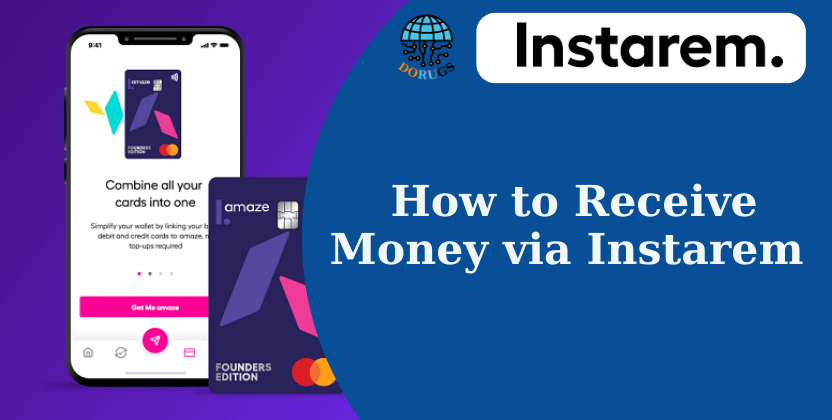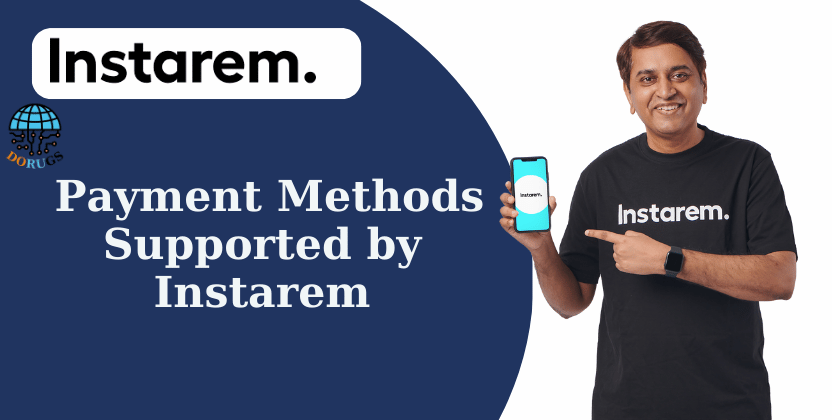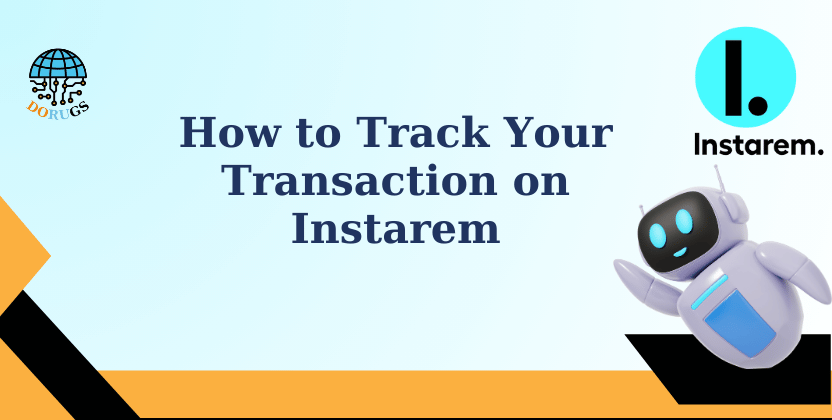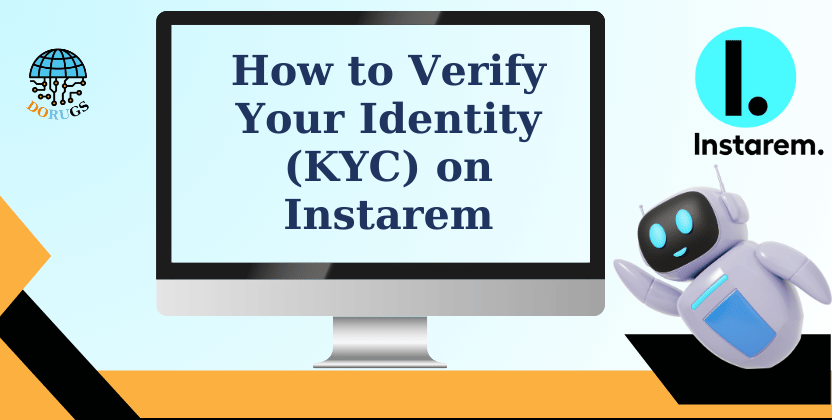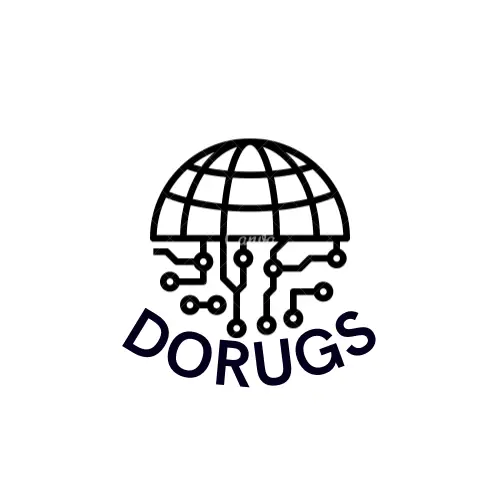The digital revolution has transformed nearly every aspect of business, and customer service is at the forefront of this change. Traditional support models, once reactive and siloed, are rapidly giving way to agile, omnichannel solutions that empower organizations to engage with customers in real time—across multiple platforms. Freshdesk stands out as a leader in this evolution, offering an intuitive, cloud-based platform that not only handles support tickets but also integrates digital transformation into every facet of customer experience. This guide dives deep into how Freshdesk leverages cutting-edge technology to redefine customer service. Whether you’re a small business looking to streamline support or a multinational corporation seeking to overhaul your customer engagement strategy, understanding Freshdesk’s role in digital transformation is essential to staying competitive in today’s market. The Digital Transformation Imperative in Customer Service Shifting Customer Expectations The rise of digital technology has fundamentally altered how customers interact with brands. Today’s consumers expect: Immediate Responses: With the prevalence of smartphones and social media, customers anticipate instant feedback. Multi-Channel Communication: Customers now engage via email, live chat, social media, and mobile apps, requiring seamless transitions between channels. Personalized Experiences: Data-driven insights allow businesses to tailor responses and offers, meeting customers’ unique needs. These expectations force companies to rethink their customer service strategies. The traditional reactive approach is no longer sufficient; instead, businesses must proactively engage customers and harness technology to anticipate and resolve issues before they escalate. Digital Transformation Defined Digital transformation is the integration of digital technology into all areas of business, fundamentally changing how organizations operate and deliver value. For customer service, this means: Leveraging Cloud-Based Tools: Cloud platforms offer scalability, flexibility, and remote access—critical in a digital-first world. Embracing Automation: AI-driven automation minimizes manual tasks, ensuring faster response times and consistent service quality. Utilizing Data Analytics: Advanced analytics empower businesses to make data-driven decisions, optimize processes, and continuously improve customer satisfaction. Fostering Omnichannel Engagement: A seamless experience across various channels ensures that customer interactions are unified and contextually informed. Freshdesk is at the intersection of these digital transformation trends, serving as both a support solution and a catalyst for change. How Freshdesk Powers Digital Transformation in Customer Service Freshdesk is more than just a ticketing system. It’s a comprehensive customer support platform built to meet the demands of the digital era. Let’s examine the key features that position Freshdesk as a driver of digital transformation. 1. Cloud-Based Architecture Freshdesk’s cloud-based model provides several strategic advantages: Accessibility: Employees can access the platform from anywhere, enabling remote support teams to work collaboratively in real time. Scalability: As your business grows, Freshdesk scales with you—whether you’re handling a few tickets a day or thousands. Cost Efficiency: With no need for on-premises infrastructure, businesses save on hardware costs and IT maintenance. By leveraging the cloud, Freshdesk helps organizations transition to a more agile, flexible support model, essential for thriving in today’s digital economy. 2. Omnichannel Support In a world where customer interactions occur across a myriad of channels, Freshdesk unifies these touchpoints into a single platform: Email, Phone, and Live Chat Integration: All customer queries—regardless of origin—are automatically converted into support tickets. Social Media Management: Freshdesk captures and organizes interactions from platforms like Facebook and Twitter, ensuring no inquiry goes unanswered. Self-Service Portals: A robust knowledge base and community forums empower customers to find answers on their own, reducing the volume of routine queries. This omnichannel approach not only enhances operational efficiency but also ensures a consistent, personalized customer experience across every channel. 3. Intelligent Automation and AI Automation is a cornerstone of digital transformation. Freshdesk harnesses AI to streamline support operations and improve service quality: Automated Ticket Routing: Intelligent algorithms assign tickets based on agent expertise, ensuring that queries are handled by the most qualified team member. Canned Responses and Macros: Predefined responses allow agents to quickly address common issues, reducing response times and improving consistency. Chatbots and Virtual Assistants: AI-powered bots handle routine inquiries, freeing up human agents to tackle complex issues and providing 24/7 support. By automating repetitive tasks, Freshdesk not only improves operational efficiency but also enables support teams to focus on delivering strategic, high-value customer interactions. 4. Data-Driven Decision Making Freshdesk provides powerful reporting and analytics tools that enable businesses to: Monitor Key Performance Indicators (KPIs): Track response times, resolution rates, and customer satisfaction scores in real time. Identify Trends and Insights: Analyze support data to uncover recurring issues, enabling proactive improvements in products and services. Optimize Workflows: Use data to fine-tune automation rules, resource allocation, and overall support strategies. These analytics transform raw data into actionable insights, fostering a culture of continuous improvement and ensuring that customer service strategies evolve in line with business goals. 5. Integration Capabilities Modern businesses rely on a suite of digital tools. Freshdesk’s open API and pre-built integrations ensure seamless connectivity with other systems, including: Customer Relationship Management (CRM) Systems: Integrate support data with customer profiles to deliver personalized service. Marketing Automation Platforms: Align customer engagement strategies by syncing data between support and marketing systems. Collaboration Tools: Connect with platforms like Slack or Microsoft Teams for real-time internal communication and issue resolution. These integrations create a unified ecosystem where customer data flows freely between systems, enhancing the overall efficiency and effectiveness of your digital transformation strategy. Real-World Impact: Freshdesk in Action Case Study 1: A Startup’s Journey to Scalability A fast-growing tech startup faced mounting challenges as its customer base expanded rapidly. Traditional email support was no longer sufficient, leading to delayed responses and mounting customer dissatisfaction. By adopting Freshdesk, the startup was able to: Automate Ticket Routing: Ensuring that support queries were promptly assigned to the right team members. Implement Omnichannel Support: Consolidating queries from various channels into a single, manageable dashboard. Leverage Data Analytics: Monitoring KPIs and using insights to continuously optimize support processes. The result was a dramatic reduction in response times, increased customer satisfaction, and a scalable support model that grew with the company. Case Study 2: Global Enterprise Transformation A multinational corporation with a diverse customer
Freshdesk vs Intercom: Which Solution Suits Your Business Best?
In today’s competitive market, providing exceptional customer support is essential for business growth. Two of the most popular platforms in the customer engagement space are Freshdesk and Intercom. Both have carved out significant niches by offering unique features, but which one is the right fit for your business? In this comprehensive review, we’ll compare Freshdesk and Intercom—evaluating their functionalities, pricing, user experience, integration capabilities, and more. Our goal is to provide you with an in-depth business comparison that will help you make an informed decision. Understanding the Platforms Before diving into the head-to-head comparison, it’s important to understand the core offerings of each platform. Freshdesk: A Robust Customer Support Platform Freshdesk, part of the Freshworks suite, is a cloud-based customer support software known for its powerful ticketing system. It centralizes customer interactions from various channels such as email, phone, chat, and social media, turning them into actionable tickets. Key features include: Smart Ticket Management: Freshdesk automatically assigns and prioritizes tickets to ensure timely resolution. Omnichannel Support: Integrates multiple communication channels into a single, unified platform. Automation & Workflows: Offers extensive automation capabilities, reducing manual tasks and speeding up response times. Knowledge Base & Self-Service: Enables businesses to build self-help portals, reducing the support load. Comprehensive Reporting: Provides deep insights into support team performance with robust analytics. Freshdesk is designed to be user-friendly and scalable, making it suitable for businesses of all sizes—from startups to large enterprises. Intercom: A Conversational Relationship Platform Intercom takes a different approach by focusing on conversational engagement. Rather than just managing support tickets, Intercom provides a suite of tools that facilitate real-time communication and personalized messaging across multiple channels. Its core features include: Live Chat & Messaging: Intercom’s real-time chat capabilities allow for instant communication with customers. Targeted Messaging: Enables businesses to send personalized messages based on user behavior and segment data. In-App Messaging: Offers seamless integration within web and mobile applications to engage users where they are most active. Customer Data Platform: Aggregates customer data to deliver tailored experiences and actionable insights. Automation & Bots: Provides automated chatbots to handle common inquiries and assist in lead qualification. Intercom is particularly popular among SaaS companies and e-commerce businesses that emphasize proactive customer engagement and conversational marketing. Feature Comparison When it comes to choosing between Freshdesk and Intercom, evaluating the core features is crucial. Let’s break down the most important functionalities and how each platform fares. Ticketing and Support Management Freshdesk: Ticketing System: Freshdesk is renowned for its robust ticketing system that automatically converts emails, phone calls, chat messages, and social media interactions into tickets. SLA Management: With defined Service Level Agreements (SLAs), support teams can prioritize and manage tickets effectively. Collaboration Tools: Freshdesk enables internal notes and agent collaboration to resolve issues faster. Automation: Canned responses, triggers, and workflow automation minimize manual intervention. Intercom: Conversational Support: Intercom’s strength lies in its live chat and messaging tools. Instead of a traditional ticketing system, customer interactions are maintained as conversation threads. Inbox Management: While it lacks a conventional ticketing system, Intercom’s inbox consolidates messages, allowing agents to manage inquiries efficiently. Automation: Intercom offers automation through bots and targeted messaging, but it is more focused on conversational flows than ticket lifecycle management. Which Is Better? For businesses with high support ticket volumes and the need for rigorous SLA tracking, Freshdesk’s ticketing system is a clear winner. However, if your business prioritizes real-time, conversational customer support with a personal touch, Intercom might be the better choice. Omnichannel Support and Communication Freshdesk: Unified Dashboard: Freshdesk consolidates multiple communication channels (email, phone, chat, social media) into one platform. Integration Capabilities: It offers seamless integrations with various channels, ensuring that no customer query is missed. Self-Service Portals: The platform includes robust knowledge base features that empower customers to resolve issues on their own. Intercom: Multi-Channel Engagement: Intercom excels at real-time chat and in-app messaging, providing a more dynamic communication experience. Personalization: Its targeted messaging and automated campaigns allow for a high degree of personalization, engaging customers at key moments. Contextual Conversations: Intercom’s ability to integrate customer data enables agents to have context-rich interactions. Which Is Better? If your strategy revolves around proactive engagement and personalized communication, Intercom’s omnichannel capabilities and conversational design will serve you well. On the other hand, if your focus is on managing high volumes of support requests across various channels with a structured process, Freshdesk is more suitable. Automation and Workflow Freshdesk: Rule-Based Automation: Freshdesk allows you to set up complex rules that automate ticket assignment, escalation, and follow-ups. Canned Responses and Macros: These features enable agents to resolve repetitive issues quickly. Custom Workflows: Businesses can design workflows tailored to their specific support processes, ensuring consistency and efficiency. Intercom: Chatbots and Automated Replies: Intercom uses AI-powered bots to handle initial customer interactions, qualify leads, and answer common questions. Triggered Messaging: The platform can send automated, behavior-based messages, driving engagement and retention. Campaign Automation: Intercom’s automation extends to marketing campaigns, providing a blend of support and sales automation. Which Is Better? Both platforms offer powerful automation, but the choice depends on your focus. Freshdesk’s automation is more geared toward streamlining support operations and ticket management, while Intercom’s is designed to drive engagement and lead nurturing. Consider what your business needs most: operational efficiency or proactive customer engagement. Analytics and Reporting Freshdesk: Comprehensive Reporting Tools: Freshdesk provides detailed reports on agent performance, ticket resolution times, customer satisfaction scores, and more. Real-Time Dashboards: Managers can monitor support metrics in real time and make data-driven decisions. Custom Reports: The platform allows you to create custom reports tailored to your business’s unique needs. Intercom: Customer Engagement Analytics: Intercom’s reporting focuses on engagement metrics, such as message open rates, conversation response times, and customer journey analytics. Behavioral Insights: The platform aggregates customer data to provide insights into how users interact with your messages and in-app experiences. Campaign Performance: Detailed analytics help you measure the effectiveness of your automated messaging and targeted campaigns. Which Is Better? For traditional support metrics and in-depth performance analytics, Freshdesk’s
Key Milestones: Freshdesk’s Major Achievements in Customer Support
In today’s fast-evolving customer service landscape, companies need tools that not only manage support requests efficiently but also drive innovation in engagement. Freshdesk, a cloud-based customer support solution, has become a benchmark for excellence. Over the years, its journey is marked by transformative milestones that have redefined what it means to deliver world-class customer service. In this article, we explore Freshdesk’s major achievements, delve into its groundbreaking innovations, and illustrate how these milestones have shaped the future of customer support. A Vision Realized: The Early Days Freshdesk was founded with a clear mission: to revolutionize customer support by leveraging the power of cloud technology. Born out of the frustration with outdated, cumbersome support systems, Freshdesk’s founders set out to create an intuitive platform that could be adopted by businesses of any size. Early Innovation: In its inception phase, Freshdesk introduced a user-friendly ticketing system that turned every customer query—whether it came via email, chat, or phone—into a manageable, trackable ticket. This simple yet powerful idea laid the foundation for what would become one of the most widely adopted support platforms globally. Key Achievement: Within a short span after launch, Freshdesk rapidly attracted small and medium businesses looking for a more agile support solution. Its intuitive design and ease of integration allowed companies to improve their response times, leading to a significant uptick in customer satisfaction. Milestone 1: The Breakthrough Product Launch One of Freshdesk’s earliest and most impactful milestones was the product launch itself. By offering a cloud-based solution that required no heavy IT investment, Freshdesk democratized customer support software. This breakthrough provided companies with immediate access to enterprise-level capabilities without the need for a steep learning curve. Major Innovation at Launch: Cloud-Based Architecture: This allowed businesses to access their support platform from anywhere, facilitating a remote and distributed workforce. Affordable Pricing Models: Freshdesk’s subscription-based pricing opened the door for startups and SMEs, making advanced customer support accessible without breaking the bank. Impact: The success of the initial launch not only validated the founders’ vision but also set the stage for rapid global expansion. Companies could now manage their support operations with unprecedented efficiency, laying the groundwork for the next phase of Freshdesk’s evolution. Milestone 2: Global Expansion and International Adoption Freshdesk’s rapid success in its home market was soon followed by aggressive global expansion. Recognizing that customer support challenges are universal, Freshdesk tailored its platform to serve a diverse, international clientele. Strategies for Global Success: Localization and Multilingual Support: Freshdesk quickly evolved to support multiple languages, ensuring that businesses could offer customer service in the native language of their clientele. Flexible Scalability: The platform was designed to handle a growing volume of support tickets, whether a company was managing a dozen queries per day or thousands per minute. Regional Data Centers: To address concerns over data privacy and speed, Freshdesk invested in localized data centers, ensuring a seamless experience for customers worldwide. Impact: This global approach not only bolstered Freshdesk’s reputation as a leader in customer support software but also fueled its growth. Today, Freshdesk serves thousands of businesses across more than 100 countries, a testament to its ability to adapt to diverse market needs and regulatory environments. Milestone 3: Pioneering Omnichannel Customer Support A major shift in customer expectations is the demand for consistent, omnichannel support. Recognizing this trend early on, Freshdesk integrated multiple channels into its platform—enabling businesses to interact with their customers across email, phone, live chat, social media, and more. Key Features Introduced: Unified Dashboard: Freshdesk consolidated all customer interactions into one central dashboard. This meant that support teams no longer had to switch between different tools or platforms to resolve queries. Real-Time Synchronization: Customer queries from various channels were automatically synchronized, ensuring that support agents had access to the full context of an issue before responding. Social Media Integration: With the rise of social networks, Freshdesk integrated platforms like Facebook and Twitter, enabling companies to monitor and respond to customer feedback in real time. Impact: The introduction of omnichannel support transformed the customer service landscape. It allowed businesses to provide a more cohesive and personalized experience, leading to faster resolution times and higher customer satisfaction. This milestone set a new industry standard and pushed competitors to innovate further. Milestone 4: Revolutionizing Automation and Workflow Management As support volumes grew and customer expectations evolved, the need for automation became apparent. Freshdesk’s introduction of advanced automation capabilities was a game-changer for support teams, reducing manual workload and increasing efficiency. Innovative Automation Features: Automated Ticket Routing: Freshdesk introduced rules-based ticket assignment that ensured queries were instantly directed to the appropriate agent or department based on predefined criteria. Canned Responses and Macros: With a library of pre-defined responses, support agents could quickly address common issues, significantly reducing response times. Custom Workflows: The ability to create custom workflows allowed businesses to tailor the support process to their unique operational needs. From escalation protocols to SLA tracking, Freshdesk made it easy to enforce consistency and quality. Impact: These automation features not only improved operational efficiency but also empowered support teams to focus on more complex, high-value tasks. By streamlining repetitive tasks, Freshdesk enabled businesses to deliver more proactive, responsive customer service—a key factor in today’s competitive market. Milestone 5: Embracing Artificial Intelligence and Machine Learning In its continuous quest for innovation, Freshdesk has been at the forefront of integrating artificial intelligence (AI) into its platform. AI-driven features have helped the company to further optimize customer support operations and deliver smarter, more predictive services. AI-Powered Capabilities: Intelligent Ticket Categorization: AI algorithms analyze incoming support requests and automatically categorize them, ensuring that each ticket is handled by the most suitable agent. Predictive Analytics: By leveraging machine learning, Freshdesk provides predictive insights that help managers anticipate potential issues and take proactive measures. Chatbots and Virtual Assistants: Freshdesk has integrated AI-driven chatbots that can handle basic queries and guide customers through troubleshooting steps, providing 24/7 support without human intervention. Impact: The integration of AI and machine learning has not only enhanced the efficiency
What is Freshdesk? History and Mission Explained
Customer support has evolved dramatically over the past decade. Once seen as a reactive function—dealing with customer complaints and queries—today’s support teams are strategic drivers of customer satisfaction and brand loyalty. This shift has been largely fueled by technological advancements and the introduction of powerful, cloud-based solutions like Freshdesk. But what is Freshdesk exactly? In simple terms, Freshdesk is a cloud-based customer support software designed to help businesses manage customer inquiries, automate repetitive tasks, and create a seamless support experience across multiple channels. However, there is much more beneath the surface. To truly appreciate its value, it’s essential to understand Freshdesk’s rich history and the mission that continues to drive its innovation. What is Freshdesk? Defining Freshdesk Freshdesk is a comprehensive helpdesk platform that centralizes customer support efforts into a single, user-friendly interface. It allows support teams to track, manage, and resolve customer issues efficiently. With a focus on usability and scalability, Freshdesk is designed to cater to businesses of all sizes—from startups to multinational enterprises. At its core, Freshdesk transforms customer emails, social media messages, chat sessions, and phone calls into organized tickets. This ticketing system not only simplifies the process of managing support queries but also ensures that no customer issue is overlooked. By automating key processes and providing a wealth of analytical insights, Freshdesk empowers companies to deliver faster, more personalized service. Key Features and Capabilities Freshdesk is packed with features that make it a standout choice in the customer support software market: Smart Ticketing System: Automatically converts customer interactions into tickets and assigns them to the right agents. Omnichannel Support: Integrates multiple communication channels—email, chat, phone, social media, and more—into one unified platform. Automation and Workflows: Reduces manual workload by automating repetitive tasks such as ticket assignment and follow-up. Knowledge Base Integration: Enables companies to build comprehensive self-service portals where customers can find answers to common questions. Detailed Reporting and Analytics: Provides insights into support team performance and customer satisfaction, helping businesses refine their support strategies. Customization Options: Offers a highly customizable interface to match the branding and unique needs of each organization. These features work together to create a robust, scalable solution that meets the diverse needs of modern customer support teams. The History of Freshdesk Founding Story and Early Days Every great product has a story, and the history of Freshdesk is no exception. Founded in 2010 by Girish Mathrubootham and Shan Krishnasamy, Freshdesk was born out of the founders’ own frustration with the limitations of traditional customer support tools. Recognizing the potential of the cloud and the need for a more intuitive, efficient way to handle support queries, they set out to build a solution that would empower businesses to deliver world-class customer service. In its early days, Freshdesk was a simple idea executed with passion: to make customer support not only more efficient but also more human. The founders believed that technology should enhance the customer experience rather than complicate it. This guiding principle led them to develop a platform that was both powerful and accessible—one that could be easily adopted by businesses of all sizes. Major Milestones in Freshdesk History Over the years, Freshdesk has achieved numerous milestones that have cemented its position as a leader in customer support software. Some of these key milestones include: 2010: Inception and Launch Freshdesk was launched as a cloud-based helpdesk solution, quickly gaining attention for its innovative approach to customer support. 2012: Global Expansion With a growing customer base, Freshdesk expanded its operations internationally, establishing itself as a trusted solution for businesses worldwide. 2013: Integration of Omnichannel Support The platform evolved to include omnichannel capabilities, allowing businesses to manage support queries from multiple channels in one place. 2014: Recognition and Awards Freshdesk received numerous accolades for its user-friendly interface and innovative features, earning awards from industry leaders and technology publications. 2016: Enhanced Automation Features As part of its commitment to innovation, Freshdesk introduced advanced automation tools, significantly reducing response times and boosting team efficiency. 2018: Launch of Freshworks Ecosystem The success of Freshdesk paved the way for the creation of Freshworks, an ecosystem of business solutions designed to improve customer engagement and operational efficiency. 2020 and Beyond: Continuous Innovation Today, Freshdesk continues to evolve, with regular updates and new features that address emerging challenges in customer support. The platform’s focus remains on improving usability, scalability, and integration capabilities. Growth and Expansion The growth trajectory of Freshdesk is a testament to its ability to adapt and innovate. From its humble beginnings in a small office to becoming a globally recognized solution, Freshdesk’s journey has been marked by relentless innovation and customer-centric design. As businesses increasingly shifted towards digital channels, the demand for efficient customer support solutions skyrocketed. Freshdesk not only met this demand but also redefined what customer support software could be. Its rapid adoption by startups, SMEs, and large enterprises alike is a clear indicator of its effectiveness and reliability. The Mission Behind Freshdesk Understanding the mission behind Freshdesk is crucial to appreciating its ongoing success. At its heart, Freshdesk is driven by a simple yet powerful mission: to help businesses deliver exceptional customer service by simplifying and enhancing support processes. Solving Real-World Problems Freshdesk was built to address real-world challenges that businesses face every day. In an era where customer expectations are higher than ever, traditional support systems were often cumbersome, inefficient, and disconnected. Freshdesk’s founders recognized that outdated methods were holding companies back from providing the kind of service that builds loyalty and trust. By leveraging cloud technology and intelligent automation, Freshdesk seeks to solve these problems by: Streamlining Communication: Bringing together various support channels into one coherent system. Reducing Manual Work: Automating repetitive tasks so that support teams can focus on more complex issues. Providing Actionable Insights: Utilizing analytics to empower managers with data-driven decision-making. Enhancing Customer Engagement: Ensuring that every customer interaction is timely, relevant, and effective. Empowering Businesses Worldwide Another core aspect of Freshdesk’s mission is to empower businesses of all sizes. Whether you’re a small startup or
Does Instarem Really Help Save Money on International Transfers?
In today’s globalized world, every dollar counts—especially when you’re sending money internationally. Hidden fees and poor exchange rates can significantly diminish the amount that ultimately reaches your recipient. That’s why it’s essential to choose a money transfer service that not only offers transparency but also helps you save money on every transaction. In this article, we explore whether Instarem really helps you save money on international transfers by taking a close look at its fee structure, comparing it to traditional bank transfers, and examining the factors that affect overall costs. We’ll also share practical tips on how to maximize your savings, ensuring that your hard-earned money goes further. Why Transfer Fees Matter for International Transactions When you send money abroad, the costs involved go far beyond the simple amount you want to transfer. Most services, especially traditional banks, add various fees and charge unfavorable exchange rates. These extra charges can add up quickly, especially if you’re making frequent transfers or sending large amounts. The Impact of High Transfer Fees Reduced Amount Received:Every extra fee or hidden charge means less money reaches your recipient. For families relying on remittances or freelancers receiving payments, this can make a significant difference. Lower Cost Efficiency:High fees erode the cost-effectiveness of international transfers. Over time, these additional costs can add up, leading to considerable losses. Barrier to Financial Inclusion:For many, especially in developing countries, high transfer fees can be a barrier to accessing funds, thereby affecting overall financial stability. By keeping transfer fees low, you ensure that the majority of your money is delivered to the recipient—making your transactions more efficient and financially beneficial. Instarem’s Fee Structure – Transparent and Lower Than Banks One of Instarem’s core strengths is its transparent fee structure. Unlike traditional banks that often bury fees in complex, opaque pricing, Instarem takes pride in its clear, upfront approach. Here’s what makes Instarem’s fee structure stand out: Transparent Pricing Upfront Disclosure:When you initiate a transfer with Instarem, the platform displays all fees and the applicable exchange rate before you confirm your transaction. This means you know exactly what you’re paying for—no hidden charges or unexpected costs. Competitive Rates:Instarem is known for offering exchange rates that are close to the interbank rate, minimizing the margin loss typically seen in traditional transfers. This transparency ensures that you get more value for your money. Lower Fees Compared to Banks Cost-Effective Transfers:Traditional banks tend to charge high fees for international transfers, often ranging from 3% to 5% or even more on top of poor exchange rates. In contrast, Instarem’s fees are generally a small percentage of the transfer amount, sometimes even less than 1%. Savings Over Time:For frequent transfers, these savings add up. If you send money on a regular basis, even a small reduction in fees can lead to significant long-term savings. Real-World Examples Top review websites consistently highlight how users have benefited from Instarem’s transparent fee model. Customers report saving hundreds of dollars annually compared to traditional bank transfers. By choosing Instarem, you’re not only paying less per transaction, but you’re also receiving a more predictable and reliable service. Tip: Always check the fee breakdown before confirming your transfer. Instarem’s clear display of fees is designed to help you make an informed decision and maximize your savings. Comparison: Instarem vs. Traditional Bank Transfers To truly understand how much you can save, it’s important to compare Instarem’s fees with those of traditional banks. Let’s break down the key differences. Fee Structure Comparison Traditional Banks:Banks usually charge a flat fee plus a percentage of the transfer amount. Moreover, the exchange rates offered by banks include hidden markups that further reduce the value of your transfer. This results in significantly higher overall costs. Instarem:Instarem offers a fee structure that is not only lower in percentage terms but also transparent. You see exactly how much you’re paying, and the exchange rates are much more competitive. This makes Instarem a far more cost-effective option for international transfers. Processing Speed and Efficiency Banks:Bank transfers can take several days to process. Delays are common, and additional charges may apply if the transaction is held up. Instarem:Instarem typically processes transactions within 24 to 48 hours. While speed is not the only factor, faster processing often means lower costs overall, as delays can sometimes incur additional fees. Exchange Rate Markups Banks:Traditional banks often offer exchange rates that are significantly lower than the interbank rate. The hidden margin can cost you up to 4% extra, meaning your recipient gets less than what you intended. Instarem:Instarem uses exchange rates that are very close to the interbank rate, with only a minimal markup. This ensures that you get the most out of your money, maximizing the amount that reaches the recipient. User Experience and Transparency Banks:Many users complain about the lack of transparency with banks. Hidden fees and complex pricing structures make it difficult to know the true cost of a transfer until after the fact. Instarem:Transparency is at the heart of Instarem’s service. From the moment you initiate a transfer, you’re presented with all the details—fees, exchange rates, and processing times—allowing you to make an informed choice. Example:Imagine you’re sending $1,000 overseas. A traditional bank might charge $50 in fees and provide an exchange rate that’s 3% lower than the market rate, meaning your recipient might only get around $940. With Instarem, you might only pay $10-$15 in fees and receive an amount much closer to the true exchange rate, potentially delivering $980 or more. Over time, these savings can be significant. Factors Affecting Cost: Exchange Rates, Payment Methods, and Recipient Country While Instarem is designed to be cost-effective, several factors can influence the total cost of your international transfer. Understanding these factors can help you optimize your savings. 1. Exchange Rates Market Fluctuations:Exchange rates are constantly changing. Instarem provides real-time updates on exchange rates, allowing you to time your transfers for maximum value. Markup Percentage:The difference between the mid-market rate and the rate offered by your transfer service is critical. Instarem’s minimal markup
How to Receive Money via Instarem
In today’s interconnected world, receiving money internationally should be as easy and secure as sending it. Instarem offers a variety of payout options that make receiving funds convenient, fast, and cost-effective. Whether you’re an expatriate, a freelancer, or a small business owner, knowing how to receive money on Instarem can help you manage your finances with greater ease and transparency. In this comprehensive guide, we’ll walk you through the different payout methods available on Instarem, explain the benefits of each, and provide practical tips for a smooth payout experience. Drawing on insights from the top review websites around the world, this guide covers everything from receiving money directly into your bank account to cash pickup and mobile wallet deposits. By the end, you’ll understand how long it takes to receive money with Instarem and why it’s one of the best choices for international money transfers. Why Receiving Money with Instarem Matters Enhancing Financial Flexibility Receiving money through Instarem offers unmatched flexibility. Whether you’re expecting a salary from an international employer, remittances from family members abroad, or payments from clients worldwide, Instarem’s payout options cater to various needs. The platform is designed to deliver funds securely and efficiently, so you can access your money when and how you need it. Security and Transparency One of the standout features of Instarem is its commitment to security and transparency. Every transaction is tracked in real time, and the fee structure is clear—no hidden charges or surprise markups. This ensures that both the sender and the receiver can trust that every cent is accounted for, and you always know exactly what you’re getting. Convenience Across the Globe Instarem supports multiple payout methods tailored to different regions and user preferences. Whether you prefer a direct bank deposit, need cash picked up in person, or want funds deposited into your mobile wallet, Instarem has you covered. This variety is especially beneficial for users in regions with different banking infrastructures. Payout Options on Instarem Instarem offers a range of payout methods to suit various needs. Here’s an in-depth look at each option available: 1. Receiving Money Directly into a Bank Account Direct bank deposits are the most common and popular payout option on Instarem. Here’s why: Benefits of Bank Deposits Cost-Effectiveness:Bank transfers generally come with low fees, which means more of your money is delivered directly to your account. Wide Availability:This option is available in most countries supported by Instarem. Whether you’re in North America, Europe, Asia-Pacific, or other regions, direct deposits are a reliable method. Security:Bank deposits are processed through well-established financial institutions, ensuring that your funds are transferred securely. Convenience:Once the money is in your bank account, you can access it immediately, make payments, or transfer funds as needed. How It Works Sender Initiates Transfer:The person sending you money chooses your country and specifies a bank deposit as the payout method. Bank Details Provided:You (or the sender) provide your bank details, such as your account number, bank name, and IBAN (if applicable). Processing Time:After the transfer is initiated, funds are typically deposited into your account within 1-2 business days, depending on the receiving bank and local processing times. Confirmation:You receive notifications via email or SMS when the deposit is made, so you’re always informed about the status of your funds. Tip: Make sure your bank details are accurate and up-to-date to avoid any delays or errors in the transfer process. 2. Cash Pickup Options For recipients who may not have access to a bank account or prefer to collect cash in person, Instarem offers cash pickup services in certain regions. Advantages of Cash Pickup Accessibility:In many developing regions or rural areas, not everyone has a bank account. Cash pickup ensures that your funds are available even if you don’t have direct bank access. Speed:Cash pickups can often be processed faster than bank deposits. In some cases, money is available within a few hours of the transaction being completed. Convenience:You can collect your cash from designated pickup locations, such as partner banks or money transfer agents, which are often conveniently located in urban centers. How to Receive Cash Pickup Select Cash Pickup as Your Payout Option:When the sender sets up the transaction, they can choose cash pickup if it’s available in your country. Provide Pickup Location Details:You may need to provide the name of your city and preferred pickup location. Instarem partners with local banks or agents to ensure widespread availability. Verification and ID:At the time of pickup, you’ll be required to show a valid government-issued ID to confirm your identity. Collect Your Money:Once verified, you can collect your funds in cash. You will typically receive a confirmation receipt and notification that your money has been disbursed. Tip: Check the available pickup locations in your area ahead of time to ensure that you choose the most convenient option. 3. Mobile Wallet Deposits – Fast and Convenient In many regions, mobile wallets are quickly becoming the preferred method for receiving money due to their speed and convenience. Benefits of Mobile Wallet Deposits Instant Access:Mobile wallets allow you to access your funds immediately after the transfer is completed, which is particularly useful for everyday expenses. Lower Fees:In some markets, mobile wallet deposits may incur lower fees compared to traditional bank transfers. Ease of Use:With a mobile wallet, you can manage your money directly from your smartphone. This digital-first approach is perfect for tech-savvy users and those in regions where mobile payments are common. Enhanced Flexibility:Mobile wallets can be used for a variety of transactions, such as paying bills, shopping online, or transferring money to other wallet users. How Mobile Wallet Deposits Work Link Your Mobile Wallet:Before receiving money, ensure your mobile wallet is linked to your Instarem account. This may involve providing your wallet ID or phone number associated with the wallet. Select Mobile Wallet as the Payout Option:When setting up the transfer, the sender chooses mobile wallet deposit as the preferred payout method. Instant Transfer:Once the transaction is processed, the funds are deposited into your mobile
Payment Methods Supported by Instarem
In today’s global economy, having flexible, transparent, and cost-effective payment options is essential when transferring money internationally. Instarem has earned a reputation as a leading money transfer platform by offering a wide range of payment methods that cater to different needs. Whether you’re sending money to family overseas, paying for education abroad, or managing business transactions, knowing your Instarem payment options can help you optimize both speed and cost. In this comprehensive guide, we’ll explore the various ways to fund Instarem transfers—from traditional bank transfers and debit/credit card payments to modern e-wallet integrations. We’ll break down the benefits and considerations of each method, and provide clear, step-by-step insights on how to choose the right option for your specific needs. By the end of this guide, you’ll have all the information you need to fund your transfers confidently and efficiently. Let’s dive in! Overview of Payment Options on Instarem Instarem is designed with user convenience in mind. To ensure that every transfer is tailored to the customer’s requirements, Instarem supports several payment methods. These options include: Bank Transfers: Often the most cost-effective option with lower fees. Debit/Credit Card Payments: Offer faster processing times, although extra fees might apply. E-Wallet Integrations: In select regions, e-wallets provide an additional layer of convenience and accessibility. Each method comes with its unique set of advantages and potential trade-offs. When deciding which payment option to use, you should consider factors like transaction speed, associated fees, and the overall ease of use. Bank Transfers – The Most Cost-Effective Option Bank transfers are widely recognized as one of the most economical ways to fund international transfers. Here’s why they might be the right choice for you: Why Choose Bank Transfers? Low Fees:Bank transfers typically incur lower fees compared to other payment methods. Instarem leverages direct bank-to-bank transfers to reduce processing costs, and these savings are passed directly on to you. For frequent or high-value transfers, this can lead to significant cost savings. Competitive Exchange Rates:With bank transfers, Instarem often offers competitive exchange rates that are close to the mid-market rate. This means you get more value out of your money compared to using other methods that may add hidden markups. Secure and Reliable:Direct bank transfers are highly secure. Instarem adheres to strict regulatory standards, ensuring that your funds are moved safely between banks. The security of your bank details is paramount, and using bank transfers minimizes the risk of fraud. Widely Available:Almost every user has access to a bank account, making this payment method universally accessible regardless of your location. How to Fund Instarem Transfers via Bank Transfer Log in to Your Instarem Account:Once you’re registered and verified, log in to your account via the Instarem website or mobile app. Select “Bank Transfer” as Your Funding Method:When setting up a transfer, choose the bank transfer option from the available payment methods. Enter Your Bank Details:Provide the required bank account details. These typically include your account number, bank name, and routing number (or IBAN for international transfers). Confirm the Transfer:Review the fee structure and exchange rate. If everything looks good, confirm your transfer. Instarem will then process the transaction, and you can track its progress in real time. Tip: If you plan to send regular transfers via bank transfer, consider saving your bank details in your Instarem account for even faster processing in the future. Debit/Credit Card Payments – Faster but May Incur Extra Fees For users who value speed, paying with a debit or credit card is an excellent option. However, it’s important to be aware of the trade-offs involved. Benefits of Using Debit/Credit Cards Faster Processing Times:Card payments are processed almost instantly, which can be particularly beneficial if you need the money to reach the recipient quickly. In many cases, using a card can reduce the transfer time to just a few hours. Convenience:Most people have a debit or credit card readily available. Instarem’s platform is designed to accept these payments seamlessly, providing a quick and efficient way to fund your transfers without needing to set up a bank transfer. Accessibility:For those who might not have immediate access to online banking or prefer the convenience of using a card, this option is ideal. It’s especially useful for urgent transfers where every minute counts. Considerations When Using Cards Additional Fees:Although card payments are faster, they can come with extra fees. These fees vary depending on your card provider and the country you’re sending money from. Typically, these fees are a small percentage of the transaction amount. Exchange Rate Impact:Sometimes, card payments may involve a less favorable exchange rate compared to bank transfers. Make sure to review the rate provided before confirming your transaction. Security and Fraud Protection:While Instarem uses advanced encryption and fraud detection, card payments inherently carry a risk of unauthorized transactions. Always ensure that your card details are secure and that you monitor your bank statements regularly for any discrepancies. How to Fund Instarem Transfers with a Card Log in and Navigate to the Payment Section:Access your Instarem account and select “Debit/Credit Card” as your preferred payment method. Enter Your Card Details:Provide your card number, expiration date, and CVV code. Instarem’s secure payment gateway ensures that your details are encrypted. Review Fees and Exchange Rates:Before you confirm your transfer, check the displayed fees and the exchange rate. This helps you understand the total cost of your transaction. Confirm the Payment:Once satisfied with the details, authorize the transaction. Your card will be charged, and the funds will be processed almost instantly. Tip: If you’re transferring a larger sum and time is not a critical factor, consider using a bank transfer to avoid the additional card fees. E-Wallet Integrations – A Modern Option in Select Countries In addition to traditional bank transfers and card payments, Instarem also supports e-wallet integrations in select countries. This payment method is becoming increasingly popular due to the rise of digital wallets. Advantages of E-Wallet Payments Instant Funding:E-wallets allow for near-instant transfers, making them a great choice for users who need to
How to Track Your Transaction on Instarem
In today’s fast-paced global economy, knowing exactly where your money is and when it will arrive is crucial. Whether you’re sending funds to family overseas, paying for education abroad, or handling business payments, transparency and security in money transfers are non-negotiable. That’s where Instarem transaction tracking comes in. This article will provide you with a comprehensive, step-by-step guide on how to track your money transfer status on Instarem, ensuring you always have peace of mind throughout your transaction. Drawing on insights from top review websites around the world, we’ve compiled this in-depth guide to help you understand the importance of tracking your transaction and how Instarem makes it simple and efficient. By the end of this guide, you’ll know exactly how to log into your account, check the real-time status of your transfer, and receive timely notifications. And if you ever encounter delays, we’ll also cover what to do and how to contact support. Let’s dive in! Why Tracking Transactions is Important Enhancing Security and Transparency When you transfer money internationally, several factors come into play—exchange rates, fees, and the efficiency of the transfer process. Keeping track of your transaction is essential for several reasons: Security: Monitoring your transaction in real time helps you ensure that your funds are moving securely and that there are no unauthorized changes or delays. Transparency: With complete visibility into the transfer process, you know exactly how much is being sent, what fees are applied, and the exact exchange rate at the time of the transaction. This transparency builds trust between you and the service provider. Peace of Mind: Knowing where your money is at any given moment reduces anxiety, especially if the funds are needed urgently by your recipient. Proactive Management: In case of delays or issues, early detection through transaction tracking allows you to take prompt action, such as contacting customer support to resolve any problems. Tracking is not just about watching numbers on a screen—it’s about ensuring that your hard-earned money reaches its destination exactly as promised. Step 1: Log Into Your Instarem Account and Navigate to Transaction History The first step to monitoring your money transfer is accessing your Instarem account. Here’s how you can do it: 1.1 Log In Securely Visit the Instarem Website or Open the Mobile App:Open your web browser and navigate to Instarem’s website, or launch the Instarem app on your smartphone. Enter Your Credentials:Use your registered email address and password to log in. Ensure that you’re on a secure network to protect your personal and financial information. Access Your Dashboard:Once logged in, you’ll be taken to your account dashboard, which serves as your command center for managing transfers, checking balances, and viewing transaction history. 1.2 Navigate to Transaction History Locate the “Transaction History” Section:Look for a menu item labeled “Transaction History” or “My Transfers.” This section contains a record of all your past and pending transfers. Select a Specific Transaction:Click on the transaction you want to track to view detailed information, including the amount sent, fees applied, exchange rate, and current status. Tip: Bookmark the transaction history page or set up easy access on your mobile device for quick reference every time you make a transfer. Step 2: Check the Real-Time Status of Your Transfer Once you’ve accessed your transaction history, Instarem offers a user-friendly interface to monitor the progress of your transfer in real time. 2.1 Understand the Status Labels Instarem uses clear, easy-to-understand status labels. Here are some common ones: Processing:Your transfer is being processed. At this stage, the system is verifying details, debiting your account, and preparing the transaction for transfer. In Transit:Your funds are on the move. This status means that the money is being transferred between banks or financial institutions. Completed:The transfer is complete, and the funds have been credited to your recipient’s account. Pending/Delayed:Occasionally, you might see a status indicating that the transfer is pending or experiencing delays. This may occur due to factors such as bank holidays, technical issues, or additional verification requirements. 2.2 Real-Time Tracking Features Instarem’s platform is designed to give you a detailed look at every stage of your transaction: Visual Progress Bar:Many users appreciate a visual progress bar that shows how far along the transfer is in its journey. Detailed Breakdown:Click on a transaction to see a breakdown of the timeline, including timestamps for when the transfer was initiated, when it was processed, and when it is expected to be completed. Interactive Updates:Some versions of the Instarem app provide interactive maps or status indicators that update in real time, giving you a sense of movement and progress. 2.3 Benefits of Real-Time Tracking Instant Assurance:Seeing your transaction progress in real time reassures you that everything is moving as expected. Immediate Notifications of Issues:If a transfer is delayed or encounters a problem, real-time tracking alerts you immediately, so you can take action. Accurate Delivery Estimates:By monitoring the progress, you can plan ahead and inform your recipient about when to expect the funds. Tip: Make it a habit to check your transaction status immediately after initiating a transfer and then periodically until the transfer is marked as “Completed.” Step 3: Receive Notifications and Updates on Transaction Progress Instarem goes beyond just letting you log in and check your status; the platform also offers proactive notifications to keep you informed every step of the way. 3.1 Types of Notifications Email Updates:Instarem sends an email notification when your transfer is initiated, when it’s in transit, and when it’s completed. These emails provide a quick summary of the transaction details. SMS Alerts:For immediate updates, you can opt to receive SMS notifications. This is particularly useful if you’re on the go and want to stay informed without logging into your account repeatedly. Push Notifications on the Mobile App:If you have the Instarem app installed on your smartphone, you’ll receive real-time push notifications that alert you to any status changes. These notifications can include alerts for successful transfers, delays, or any required actions. 3.2 Customizing Your Notification Preferences Set Your Preferences:Within your
How to Verify Your Identity (KYC) on Instarem
In the world of international money transfers, security and regulatory compliance are more important than ever. That’s why Instarem requires users to complete a Know Your Customer (KYC) verification process. In this comprehensive guide, we’ll walk you through the Instarem KYC process, explain why identity verification is essential, and provide practical tips for a smooth experience. Whether you’re new to Instarem or need a refresher, this step-by-step guide will help you understand how to verify your identity on Instarem and unlock all its benefits. Why is KYC Verification Required on Instarem? Enhancing Security and Trust KYC (Know Your Customer) is a standard procedure in the financial world. Instarem, like other reputable money transfer services, uses KYC to ensure that all transactions are secure. By verifying your identity, Instarem protects you and your recipients from fraud, money laundering, and other illicit activities. This process builds trust in the system, so both you and the people receiving your money can be confident that all transfers are conducted securely. Regulatory Compliance KYC isn’t just about security—it’s also about meeting global regulatory requirements. Financial institutions are legally obligated to verify the identities of their users to prevent illegal activities and ensure transparency in all transactions. Instarem adheres to these international regulations, and completing the KYC process is a crucial step in maintaining compliance. This commitment not only protects users but also helps Instarem offer competitive rates and low fees, as they can operate confidently within regulated frameworks. Unlocking Full Access Completing the KYC verification process unlocks the full range of Instarem’s services. Without KYC, you might experience limitations on transaction amounts or even face delays in processing transfers. Once your identity is verified, you can enjoy seamless transfers, higher transaction limits, and the peace of mind that comes with knowing your account is secure. Step 1: Log In and Navigate to the Verification Section The first step in verifying your identity on Instarem is to log into your account and locate the verification section. Here’s how to get started: 1.1 Log Into Your Instarem Account Visit the Website or Open the App:Open your preferred web browser and go to Instarem’s website, or launch the Instarem mobile app if you’re on a smartphone or tablet. Enter Your Login Credentials:Provide your email address and password that you used during registration. If you’re logging in for the first time after registration, follow any prompts to complete the initial setup. Access Your Dashboard:Once logged in, you’ll be directed to your account dashboard, where you can manage your transfers, view transaction history, and access settings. 1.2 Navigate to the Verification Section Locate the “Verify My Identity” Option:Look for a clearly labeled option such as “Verify My Identity” or “Complete KYC” in your account menu or settings. This section is typically highlighted to ensure users complete the process promptly. Follow the On-Screen Instructions:Click on the verification option, and you’ll be guided through a series of steps. Instarem’s interface is designed to be user-friendly, with intuitive prompts that help you understand what documents are required and how to upload them. Tip: If you’re having trouble finding the verification section, use the search bar in the help center or refer to the FAQ section on the Instarem website. Customer support is also available if you need additional guidance. Step 2: Upload Required Documents After you’ve navigated to the KYC section, the next step is to upload the necessary documents. Instarem requires a few key pieces of information to verify your identity. 2.1 Document Requirements To complete your KYC verification, be prepared to upload the following documents: Government-Issued ID:This can be a passport, driver’s license, or national ID card. Make sure the document is current and that all details are clearly visible. Proof of Address:Acceptable documents include a recent utility bill, bank statement, or any official document that clearly shows your name and residential address. The document should be dated within the last three months. Selfie or Video (if required):In some cases, Instarem may ask you to take a selfie or record a short video. This extra step helps confirm that the person in the document is indeed you, adding an additional layer of security to the process. 2.2 How to Upload Your Documents Prepare Your Files:Scan or take clear photos of your documents. Ensure that the images are high resolution and all text is legible. It’s best to use natural lighting and a plain background for clarity. Upload via the Verification Portal:Within the Instarem verification section, you’ll see prompts to upload your documents. Click on the upload button, select your files, and confirm the upload. The system may allow you to preview your uploads to ensure they’re clear before final submission. Fill in Any Additional Information:Some verification forms may require you to input additional personal details. Make sure you fill in all fields accurately to avoid any delays in processing. Tip: Double-check that each document is complete and that no corners are cut off in the image. Blurry or incomplete uploads can result in delays or rejections of your verification request. Step 3: Wait for Verification Approval Once you’ve submitted your documents, the verification process is underway. Here’s what to expect during this stage: 3.1 Processing Time Standard Verification Time:Typically, Instarem’s KYC process takes about 24 to 48 hours to complete. However, in some cases, it might take slightly longer depending on the volume of verification requests and the quality of your document uploads. Instant or Faster Approvals:For many users, the verification process is completed quickly, especially if all documents are clear and correctly submitted. Some regions may benefit from faster processing times due to automated systems. 3.2 Receiving Confirmation Notification via Email or SMS:Once your identity has been verified, Instarem will send you a confirmation message via email or SMS. This notification will confirm that your account is fully activated and that you now have access to all of Instarem’s features. Account Upgrade:After verification, your account may be upgraded to allow for higher transaction limits and additional functionalities. This is
How to Transfer Money Internationally Using Instarem: A Step-by-Step Guide
In today’s globalized world, sending money across borders should be simple, affordable, and stress-free. If you’re wondering how to transfer money with Instarem, you’re in the right place. Instarem has quickly become a favorite for international money transfers, thanks to its transparent pricing, competitive exchange rates, and user-friendly platform. This comprehensive guide will walk you through every step of the process, ensuring that even first-time users can send money confidently and efficiently. Whether you’re supporting family overseas, paying for education abroad, or handling business transactions, Instarem makes transferring money internationally easy. Let’s dive into the step-by-step process and explore how Instarem simplifies every stage of your money transfer. Why Choose Instarem for International Transfers? Before we jump into the step-by-step guide, let’s take a moment to understand why Instarem stands out among other international money transfer services. Low Fees: Instarem is known for its competitive fees, which are often much lower than those charged by traditional banks and many other money transfer services. Competitive Exchange Rates: You get exchange rates that are close to the interbank rate, meaning more money reaches your recipient. Fast Processing: Instarem’s advanced technology ensures that most transactions are completed within 24 to 48 hours. Transparency: Every fee and exchange rate is shown upfront, so you’re never caught off guard by hidden charges. Security: With strict regulatory compliance and advanced encryption, your funds and personal data are well protected. These benefits make Instarem an excellent choice for anyone who needs to send money internationally. Now, let’s get started with our step-by-step guide. Step 1: Getting Started – Registration and Account Setup 1.1 Visit the Instarem Website or Download the App The first step is to create an account with Instarem. You can do this by: Visiting the Website: Open your browser and go to Instarem’s website. Downloading the App: Alternatively, download the Instarem mobile app from the Apple App Store or Google Play Store. Both the website and mobile app are designed with a clean, intuitive interface that makes signing up a breeze. 1.2 Click on “Sign Up” Once you’re on the homepage or in the app: Look for the prominent “Sign Up” button. Click or tap the button to start the registration process. 1.3 Enter Your Personal Information You will be asked to provide some basic details. This usually includes: Email Address: Use an email that you check regularly, as it will be used for verification and updates. Full Name: Enter your name exactly as it appears on your official identification documents. Phone Number: Provide a valid phone number, which may be used for additional verification or notifications. Password: Choose a strong password that includes a mix of letters, numbers, and symbols. Tip: Double-check your details for accuracy to avoid any delays in the verification process. 1.4 Agree to the Terms and Conditions Before you complete your registration, you’ll need to agree to Instarem’s terms and conditions. It’s a good idea to read these carefully so you know your rights and responsibilities when using the service. Step 2: Completing Identity Verification (KYC) 2.1 What is KYC? KYC stands for “Know Your Customer,” a process required by financial institutions to verify the identity of their users. This step is crucial for ensuring security and compliance with international financial regulations. 2.2 Provide a Government-Issued ID You will be prompted to upload a clear image or scan of a government-issued ID, such as: Passport Driver’s License National ID Card Make sure that the document is current and that all information is clearly visible. 2.3 Upload Proof of Address Next, you need to prove your residential address. Acceptable documents include: Utility Bill (dated within the last three months) Bank Statement Official Letter from a Government Agency Ensure that the document shows your name and address clearly. 2.4 Additional Verification Steps In some cases, Instarem may ask for a selfie or a short video to match your face with the ID provided. This extra step is designed to further secure your account and speed up the verification process. Tip: Follow the on-screen instructions carefully. Clear, well-lit images and videos help speed up the verification process. 2.5 How Long Does Verification Take? Typically, the verification process takes 24 to 48 hours, although it may take a bit longer during high-volume periods. If there are any issues, Instarem’s customer support will reach out to help resolve them. Step 3: Linking Your Preferred Payment Method Once your identity is verified, you’re ready to set up your payment options. This step is essential because it determines how you’ll fund your transfers. 3.1 Choose a Funding Method Instarem supports various payment methods, including: Bank Transfers: This method usually offers the lowest fees, making it ideal for those who prefer cost-effective transfers. Credit or Debit Cards: For quicker transactions, you might opt for card payments, though these can sometimes incur slightly higher fees. Other Local Payment Options: Depending on your country, Instarem may also offer other payment options like e-wallets or local bank transfers. 3.2 Enter Payment Details Fill in the required information for your chosen payment method. For bank transfers, you might need to provide your account number, sort code, or IBAN. For card payments, you will need the card number, expiry date, and CVV code. 3.3 Confirm and Save Your Payment Method After entering your details: Review the information carefully. Confirm the details to link the payment method to your Instarem account. Instarem might conduct a small test transaction to ensure that your payment method is valid and active. Tip: Make sure the payment method you choose is one you plan to use regularly to fund your transfers, as this will streamline future transactions. Step 4: Initiating Your Money Transfer Now that your account is set up and your payment method is linked, you’re ready to start transferring money internationally. 4.1 Log In to Your Account Access your Instarem account via the website or mobile app. Ensure you are using a secure internet connection to protect your financial data. 4.2 Choose the Sending
